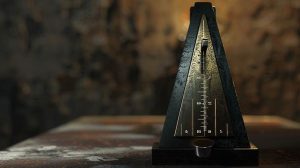
The Benefits of the Ear to Instrument Connection
I recently watched a video performance by the amazing classical pianist Yuja Chang. I’ve seen her memorizing motion and heard her virtuosic playing before, but something hit me after seeing
Categories:
Categories:
This is part three in the series I am referring to as getting out of the box. There are so many aspects of playing that have a range of options like dynamics, note range, harmony, dynamics, etc. But if you find yourself limited to only a narrow range of these musical attributes, you’re stuck in a box of limited options. In this article, I’ll explore the aspect of articulation range.
What is “articulation range?” It is the range of the various articulations you use in the course of improvising a solo (or playing any music). The problem I’m trying to solve in this part is the habit many players have of using basically one articulation to form the notes of their improvisation – typically just daa-da-daa-da-daa-da-daa…
Listen to a recording of your playing. Are you using a variety of articulations to express yourself? No matter what instrument you play, you have so many ways of forming your notes to give them character and personality.
As a wind player, I think of the attack of the note as important as the pitch of the note. In my course Pocket Jazz, I dedicate one of the video lessons to articulation and demonstrate it using a home-made recording sent to me by a subscriber. I recorded myself playing the exact same notes he played, but in my recording, I form those notes and musical ideas using a variety of articulations. Watch the two and a half minute lesson.
And to see more, you can sign up for a free preview of the 60+ lesson online course Pocket Jazz here.
Did you hear how much more expressive the phrases were when some deliberate and varied articulation was applied to the notes?
Consider the variety and range of articulations you can apply to an attack. They are obviously dependent on your instrument, but they include:
Keep in mind that this variety of articulations is not used simply for the sake of variety. They are a means for creating personality, emotion, and expression in your musical lines.How can you practice these articulations?
By deliberately using them in your playing. Exaggerate the articulation in your scale practice, in the etudes you play, and in other musical exercises. Don’t just practice scales legato. Play them staccato or use a combination of hard attack-soft attack-hard attack-soft attack…

As a trombone player, try playing Rochut etudes, not legato as they are written, but as staccato. Try playing the eighth note runs of etude number one as long-short-long-short, etc. It may sound odd, but remember that you are simply practicing your articulation.
You are training yourself to have a stronger command of the various ways to articulate a note.
Let’s listen to a master of articulation, Randy Brecker. I’ve personally learned so much about phrasing and articulating jazz from Randy through the years. Here’s a track from an alum called “Dedication” with Alan Pasqua, Dave Holland, Gary Bartz, Paul Motian, and of course Randy.
Listen to the variety of ways Randy plays notes. Bends, scoops, half valves, long, short, ghosted, etc. While we’re at it, listen to how he plays throughout the range of the horn, as I discussed in the prior segment of this series on note range.
Another master of articulation was Chick Corea. Technically, piano is considered a percussion instrument, and no one in jazz demonstrated the percussive qualities of the piano than Chick.
I’ll leave you with a favorite track of mine recorded live back in 1971 in Paris on an album called “Circle”. Playing with chick on a couple of tunes is the “avant-garde” reed player Anthony Braxton.
Now, Anthony might not be your favorite sax player playing straight-ahead jazz changes, but there is no denying that he played with fire and an energy that was delivered partly through his freedom of articulation (listen to the free improvisation toward the end and then the turn-around vamp at the end). He didn’t play with a standard rolling eighth note feel, but I think that is part of the charm of this recording and the stuff for a lesson teaching articulation variety.
Listen also to Chick’s intro, and his expressiveness delivered partly through his articulation of notes (and harmony and range and dynamics, etc.).

Trombonist, author, marketer, & tech guy
Share this post…

I recently watched a video performance by the amazing classical pianist Yuja Chang. I’ve seen her memorizing motion and heard her virtuosic playing before, but something hit me after seeing

I have created a AI chatbot called Jazz Master Chat that draws from 75 hours of interviews from my Jazz Master Summit event a couple of years ago. I interviewed

What is jazz improvisation? Let’s first define what I mean by jazz improvisation. Jazz improvisation is a spontaneous conversation, but instead of words, we use notes. Look at two possible

My recently turned 18 year old son is a passionate photographer He 8217 s got himself a little business

A couple weeks ago I sent Richie Beirach a YouTube clip from the movie Whiplash as a bit of

I originally meant to write this as a reply to a comment Richie Beirach wrote on my blog But

Tools for helping musicians at all levels learn about jazz and play to their full capability.
Web design and marketing by:
Michael Lake @JazzDigitalMarketing.com
This is just a fake book example for the type of website I can build for you. Just trying to use a little humor here!